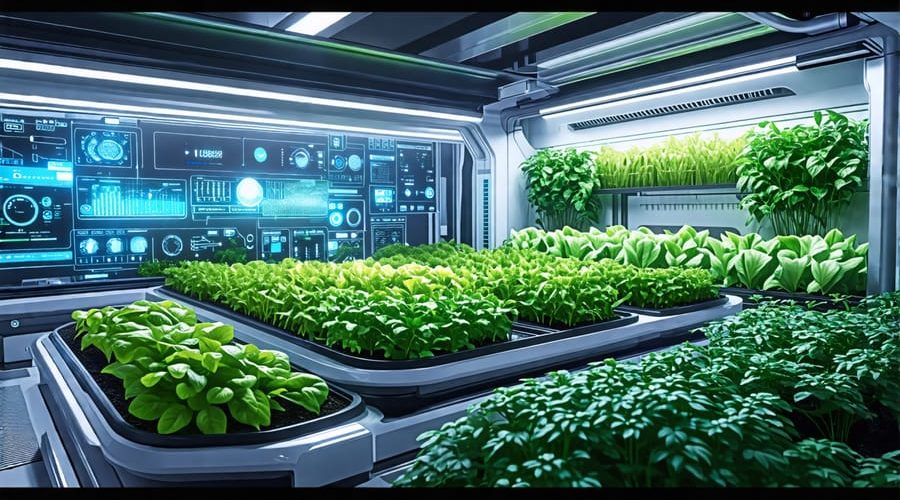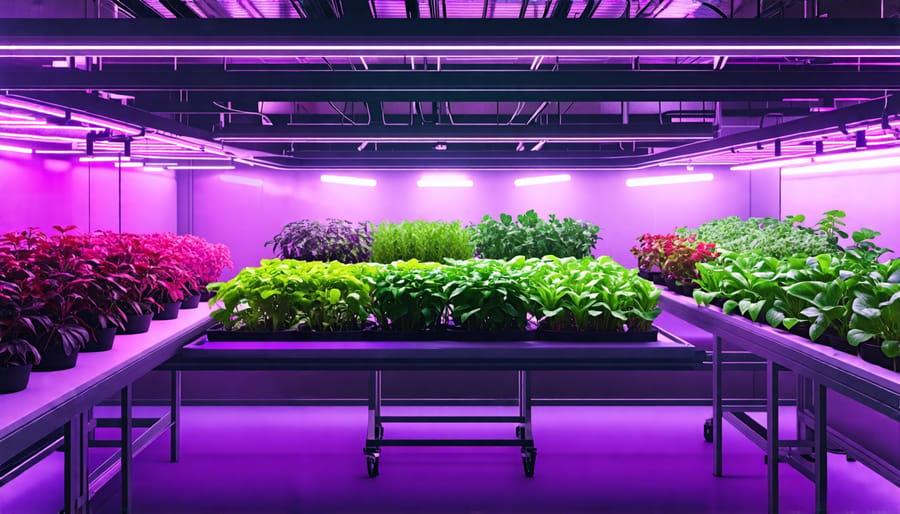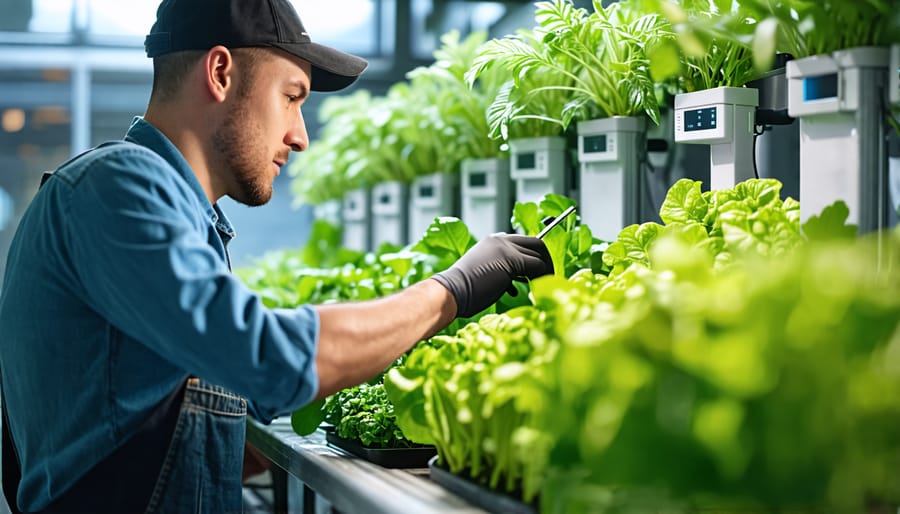
Unlock the Future of Water Gardening: Dive into Hydroponic Automation
Optimize your hydroponic setup by automating nutrient delivery to ensure plants receive precise nourishment, boosting their growth and health. Implement sensors to continuously monitor and adjust water levels, maintaining optimal conditions for your water garden systems. Regularly update software controlling your system, enabling advanced features and troubleshooting to streamline your gardening process. Consider integrating climate control features to regulate temperature and humidity, providing a stable environment for your plants to thrive. Embrace these innovations to elevate your gardening experience with efficiency and precision. water garden systems
Fundamentals of Hydroponic Systems
What is Hydroponics?
Hydroponics is a gardening method where plants are grown without soil, using nutrient-rich water instead. This innovative approach offers several advantages over traditional gardening. Such a system can be particularly appealing for DIY enthusiasts and water gardening lovers who enjoy personalizing their home environments.
By using hydroponics, you can grow plants faster and with more yield than conventional methods. The direct delivery of nutrients to the plant roots means they don’t have to expend energy searching for food, allowing them to grow more efficiently. Hydroponics also saves water, as it recycles the nutrient solution, minimizing waste. Additionally, this method reduces the need for pesticides and is less vulnerable to soil-borne diseases, resulting in healthier plants.
Imagine setting up a simple hydroponic system in your backyard or on a sunny windowsill, transforming your space into a lush, green oasis. Whether you’re a beginner or have a green thumb, hydroponics can offer exciting new ways to engage with plants.
Types of Hydroponic Systems
If you’re diving into hydroponics, you’ll encounter several fascinating systems. First up, the Nutrient Film Technique, or NFT. This involves a thin film of water enriched with nutrients flowing through channels, gently nourishing the plant roots. It’s perfect for leafy greens, because they love this constant but light feed. Easy to maintain, it’s a hit with DIYers who enjoy tinkering.
Next, consider Deep Water Culture (DWC), where plant roots dangle directly into a nutrient-rich reservoir. This method is straightforward and great for beginners because it provides a steady supply of nutrients and oxygen, ensuring lush growth for herbs and lettuces.
Lastly, there’s the Ebb & Flow system. This clever setup floods a grow tray with nutrient solution at set intervals, then drains it away. The cycle ensures plants get both nutrients and oxygen. Ideal for a wide variety of plants, this system is a favorite among more experienced enthusiasts aiming for diverse cultivation.
Each of these systems can be automated, freeing you to enjoy the beauty and bounty of hydroponics with minimal fuss. Whether you’re a novice or a seasoned water gardener, there’s a hydroponic setup for you—one that beautifully marries simplicity and efficiency.

Automation in Hydroponics: The Benefits
Saving Time and Effort
Imagine transforming your water garden into a low-maintenance oasis, thanks to hydroponic automation. This wonder of modern technology can save you countless hours typically spent on manual tasks. Automated systems monitor the critical elements of your hydroponic setup, such as nutrient levels, pH balance, and water temperature. Rather than constantly checking these parameters yourself, automation allows sensors and controllers to do the heavy lifting. They adjust nutrient delivery or lighting conditions based on what’s needed, ensuring your plants get the best care 24/7.
For a DIY enthusiast, this means more time to enjoy the beauty of your garden rather than laboring over it. Picture relaxing by your pond, satisfied in knowing that the health of your plants is efficiently managed. Embracing automation means fewer worries about forgetting to water or over-nourishing your leafy friends. Instead, your energy can be invested in designing the layout of your hydroponic display, experimenting with new plant varieties, or simply taking in the serenity of your well-tended water garden.
Improved Plant Growth
Imagine having a thriving garden without the back-and-forth adjustments to keep your plants happy. Hydroponic automation makes this possible by maintaining the perfect environment for plant growth, effortlessly. By using sensors and timers, you can ensure your plants receive just the right amount of nutrients, water, and light throughout the day. This precision is like having your personal garden caretaker, optimizing conditions and allowing your plants to grow robustly.
Automation systems can monitor and adjust pH levels and nutrient mixtures automatically, which means no more guesswork. With parameters fine-tuned, plants often show quicker growth and healthier yields. Plus, busy schedules don’t interfere with watering cycles, so you never have to worry about under or overwatering. This kind of attention to detail not only maximizes the growth potential of your plants but also saves you time. So, whether you’re a beginner or a seasoned gardener, automation opens the door to bountiful harvests and lush greenery with less effort.

Setting Up Your Automated Hydroponic System
Choosing the Right Equipment
When diving into hydroponic automation, selecting the right equipment can be a game-changer for your green oasis. Let’s break down the essentials to get you started.
First up, pumps are vital in keeping the nutrient-rich solution flowing. Look for one with a reliable flow rate that matches the size and type of your system. A submersible pump with adjustable flow settings can offer flexibility as your garden grows. Remember my first attempt when I used a pump from an old aquarium? It worked for a while until I expanded my system. So, planning for future scaling can save you time and money.
Next in line are sensors, the eyes and ears of your system. pH and EC (electrical conductivity) sensors are indispensable for monitoring nutrient levels and ensuring that your plants thrive. Opt for sensors with easy calibration features to avoid any tricky adjustments. Some beginners, including myself, initially find sensor calibration intimidating, but sticking with models that offer straightforward instructions makes all the difference.
Finally, consider controls or timers to automate lighting and nutrient delivery. A simple programmable timer can keep your plants on a consistent schedule without much fuss. As your setup becomes more advanced, you might explore smart controllers that synchronize with your mobile device, allowing you to tweak settings on the go.
Starting with the right equipment means fewer headaches and more time appreciating your verdant masterpiece!
Installation and Calibration
Installing and calibrating your hydroponic automation system is an exciting step toward having a self-sustaining water garden. Let’s dive into it! First, gather your tools: you’ll need a screwdriver, pliers, and your kit components. Start by choosing a spot away from direct sunlight and fluctuating temperatures. Assemble the automation components according to the manufacturer’s instructions. Don’t worry, it’s simpler than it sounds, and like building a puzzle, everything will click into place.
Next, it’s time to connect your water and nutrient lines. Attach the water pump to the reservoir, ensuring it’s secure to avoid leaks. If you’re like me and love seeing things in action, you’re in for a treat as the system begins to flow. Don’t forget to connect the sensors, which will help monitor your garden’s needs, making you feel almost like a plant whisperer!
Now, onto calibration. For the pH sensor, immerse it in a pH buffer solution, following the manufacturer’s specific instructions until it’s calibrated. Calibrating the nutrient sensor requires a similar method with a standard solution. These steps ensure accuracy in monitoring your garden’s health. Test the system and make any necessary adjustments for optimal performance. Enjoy watching your garden thrive with minimal intervention, all thanks to a little handiwork and technological magic!

Troubleshooting and Maintenance
Regular Maintenance Checks
To keep your hydroponic system running smoothly, conducting regular maintenance checks is key. Start by inspecting the water pump and filters weekly to ensure they’re free of blockages. It’s also wise to clean your reservoir every month; simply drain, scrub, and refill it to prevent any buildup of algae or sediments. Be sure to check pH and nutrient levels consistently, making adjustments as needed to maintain an optimal balance. Don’t forget to examine tubing for any leaks or cracks, replacing parts as necessary. With these simple steps, you’ll keep your garden thriving and healthy!
Common Issues and Solutions
Hydroponic automation offers incredible convenience, but sometimes issues can arise. One common problem is inconsistent nutrient levels. This can often be solved by regularly checking and recalibrating your pH sensors. If you’re noticing a drop in water levels, it might be due to leaks in the system or evaporation—inspect your pipes and containers for any leaks and seal them promptly. Another issue could be power outages affecting your automated system. To counter this, consider investing in a backup power supply. Lastly, if plants seem stressed, check for clogged emitters or lines, which can be easily cleaned with a gentle flush. Embrace these tweaks to keep your garden thriving effortlessly!
Conclusion
Embracing hydroponic automation in your water gardening journey can open up a world of possibilities, making the art of nurturing plants more accessible, efficient, and rewarding. This innovative approach not only optimizes the growth environment, leading to healthier and faster-growing plants, but it also simplifies the maintenance process for both novice and experienced gardeners. Imagine the joy of watching your water garden flourish while you effortlessly manage the system through automated nutrient delivery, pH balance, and even lighting. By minimizing manual intervention, hydroponic automation grants you more time to appreciate the beauty of your vibrant garden.
Whether you’re a curious DIY enthusiast or aspire to enhance your home’s outdoor aesthetics, exploring hydroponic automation can be a fulfilling endeavor. The simplicity and precision of these systems make them appealing to everyone, from beginners eager to try something new to seasoned gardeners seeking innovation. As you consider taking this leap, remember that diving into hydroponic automation not only nurtures your plants but also fosters a deeper connection with nature and technology. So why not take this exciting step, explore the wonders of hydroponic automation, and cultivate a thriving water garden that truly stands out?
